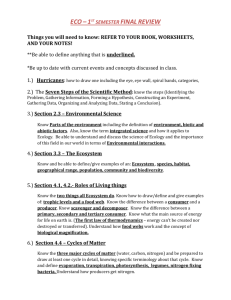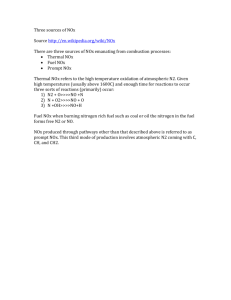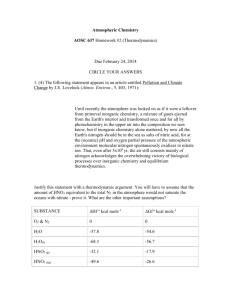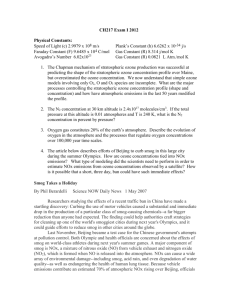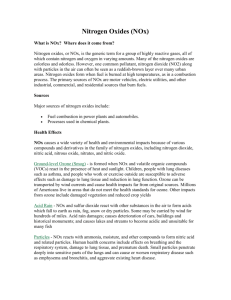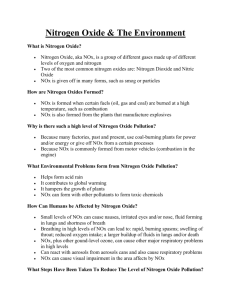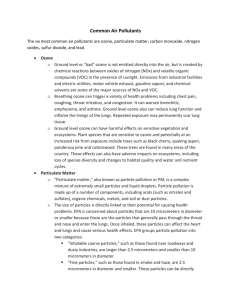Clean Air – Nitrogen Oxide Emissions Reductions
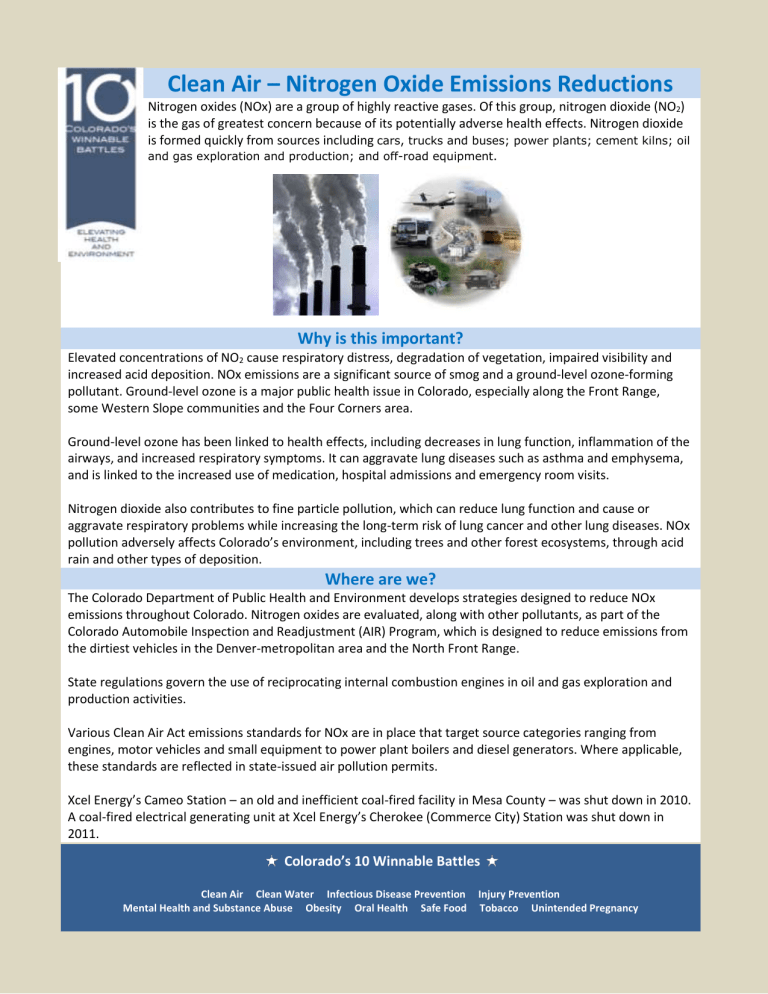
Clean Air – Nitrogen Oxide Emissions Reductions
Nitrogen oxides (NOx) are a group of highly reactive gases. Of this group, nitrogen dioxide (NO
2
) is the gas of greatest concern because of its potentially adverse health effects. Nitrogen dioxide is formed quickly from sources including cars, trucks and buses; power plants; cement kilns; oil and gas exploration and production; and off-road equipment.
Why is this important?
Elevated concentrations of NO
2
cause respiratory distress, degradation of vegetation, impaired visibility and increased acid deposition. NOx emissions are a significant source of smog and a ground-level ozone-forming pollutant. Ground-level ozone is a major public health issue in Colorado, especially along the Front Range, some Western Slope communities and the Four Corners area.
Ground-level ozone has been linked to health effects, including decreases in lung function, inflammation of the airways, and increased respiratory symptoms. It can aggravate lung diseases such as asthma and emphysema, and is linked to the increased use of medication, hospital admissions and emergency room visits.
Nitrogen dioxide also contributes to fine particle pollution, which can reduce lung function and cause or aggravate respiratory problems while increasing the long-term risk of lung cancer and other lung diseases. NOx pollution adversely affects Colorado’s environment, including trees and other forest ecosystems, through acid rain and other types of deposition.
Where are we?
The Colorado Department of Public Health and Environment develops strategies designed to reduce NOx emissions throughout Colorado. Nitrogen oxides are evaluated, along with other pollutants, as part of the
Colorado Automobile Inspection and Readjustment (AIR) Program, which is designed to reduce emissions from the dirtiest vehicles in the Denver-metropolitan area and the North Front Range.
State regulations govern the use of reciprocating internal combustion engines in oil and gas exploration and production activities.
Various Clean Air Act emissions standards for NOx are in place that target source categories ranging from engines, motor vehicles and small equipment to power plant boilers and diesel generators. Where applicable, these standards are reflected in state-issued air pollution permits.
Xcel Energy’s Cameo Station – an old and inefficient coal-fired facility in Mesa County – was shut down in 2010.
A coal-fired electrical generating unit at Xcel Energy’s Cherokee (Commerce City) Station was shut down in
2011.
Colorado’s 10 Winnable Battles
Clean Air Clean Water Infectious Disease Prevention Injury Prevention
Mental Health and Substance Abuse Obesity Oral Health Safe Food Tobacco Unintended Pregnancy
Where do we want to be?
Through a variety of statewide reduction strategies, Colorado plans to reduce NOx emissions by more than
119,000 tons per year by 2018, or an approximately 37 percent decrease in NOx emissions statewide by 2018.
What is being done?
The AIR program periodically reviews the NOx cutpoints (the permissible level of NOx emitted by vehicles). The cutpoints have been tightened several times since 1995. Federal on/off road vehicle standards are being phased in through 2018. NOx reductions are a key component of ground-level ozone reduction efforts,
Colorado’s Regional Haze State Implementation Plan and the 2010 Colorado Clean Air-Clean Jobs Act.
Additional coal-fired electrical generating units will be shut down at Xcel Energy’s Cherokee Station in 2012 and 2015. Many older, coal-fired units will either be shut down, converted to cleaner-burning natural gas, or modified with additional emission control equipment in the coming years. This includes units at Xcel Energy’s
Arapahoe (Denver), Valmont (Boulder), Hayden (Hayden), Pawnee (Brush) and Comanche (Pueblo) stations;
Platte River Power Authority’s Rawhide (Wellington) Station; Colorado Springs Utilities’ Drake (Colorado
Springs) and Nixon (Fountain) plants; Tri-State Generation and Transmission Association’s Nucla (Montrose
County) and Craig (Moffat County) plants; Black Hills Energy’s Clark Station (Cañon City); and Colorado Energy
Nations Company’s plant (Golden). Similarly, the CEMEX (Lyons) and Holcim (Florence) Portland Cement plants will install additional NOx controls.
High-risk groups
Much of the risk associated with NOx emissions is associated with ground-level ozone formation.
Active children are at greater risk from ground-level ozone exposure because their respiratory systems are still developing and they often spend time playing outdoors.
Individuals with lung diseases such as asthma, emphysema and chronic obstructive pulmonary disease
(COPD) are more susceptible because their respiratory systems already are compromised.
Adults active outdoors professionally (i.e. construction workers) or recreationally (i.e. joggers, cyclists) are at higher risk.
Underlying causes
Any fuel burning/combustion source generates nitrogen oxides. Human activity and the subsequent need for fuel to power those activities are primary components that lead to the formation of nitrogen oxides. Some natural sources of nitrogen oxides are wildfires, lightning and microbial activity in soils.
Colorado’s 10 Winnable Battles
Clean Air Clean Water Infectious Disease Prevention Injury Prevention
Mental Health and Substance Abuse Obesity Oral Health Safe Food Tobacco Unintended Pregnancy
